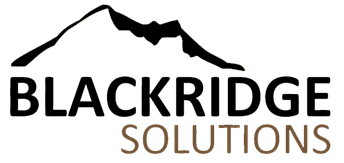
the necessary precautions to protect your staff is integral to any job. Here are some crucial lone-
worker safety tips to ensure your team’s safety and peace of mind while working independently.
Establish Rules
Creating a dedicated lone worker safety policy is essential for any organization that employs
workers who are frequently working alone in potentially hazardous environments. A well-
developed guideline can help ensure that your lone workers are safe and protected from
potential hazards.
When creating this policy, it is critical to consider the unique risks of lone work. It is also
essential to consider lone workers physical, mental, and emotional well-being. A
comprehensive policy should include protocols for responding to incidents, reporting hazards,
and providing appropriate training and support. Here are a few key considerations when
creating these rules:
1. Establish a clear chain of command: Make sure a designated person is responsible for
overseeing lone workers safety. This person should know the risks of lone work and
have the authority to take appropriate actions when necessary.
2. Develop clear protocols for responding to incidents: It is essential to have clear protocols
for responding to incidents or emergencies. These protocols should include instructions
for contacting emergency services, handling potential hazards, and what to do if a lone
worker is injured or in danger.
3. Provide appropriate training and support: Ensure all lone workers are adequately trained
and supported. It includes providing them with the necessary safety equipment and
regular safety briefings. It is also required to provide training and support to help them
cope with potential risks.
4. Establish a reporting system: Create a plan for reporting hazards or incidents. It should
include a straightforward process for filing reports and a designated person responsible
for reviewing and responding to the news.
Supervise Lone Workers
As the employer of a business, you must ensure that your workplace is a safe and healthy
environment for your employees. The National Institutes of Health (NIH) explains that
supervisors should enforce safe work practices, prevent unsafe or unhealthful conditions or
hazards, and correct dangerous conditions.
Enforcing safe work practices involves setting guidelines for employees to follow and ensuring
they are correctly followed. It could mean providing safety training to new hires and refresher
courses as needed, as well as enforcing safety protocols and ensuring employees use
appropriate personal protective equipment (PPE) when necessary.
Supervisors should stay current on current OSHA regulations and best practices to prevent
unsafe or unhealthful workplace conditions or hazards. They should also be proactive in
identifying potential risks and taking steps to address them before they become a problem. It
could mean conducting regular safety inspections, ensuring equipment is regularly serviced and maintained, and providing employees with the necessary tools and resources to do their job
safely.
Finally, supervisors should also be swift in correcting any unsafe conditions. It includes
responding to employee complaints, conducting investigations as needed, and taking the
necessary steps to address the issue.
Conclusion
Following the tips enumerated earlier will ensure lone worker safety and help them stay safe. It
is essential to take the necessary steps to protect oneself from potential hazards and to keep
informed of the safety protocols. By following these tips, lone workers can work confidently and
securely and ensure their safety is a priority.
If you want to incorporate lone worker safety into your work process, you should consult
BLACKRIDGE Solutions. We will strategically test and choose leading manufacturers to
minimize your exposure. Contact us now for more information! [email protected]

 RSS Feed
RSS Feed